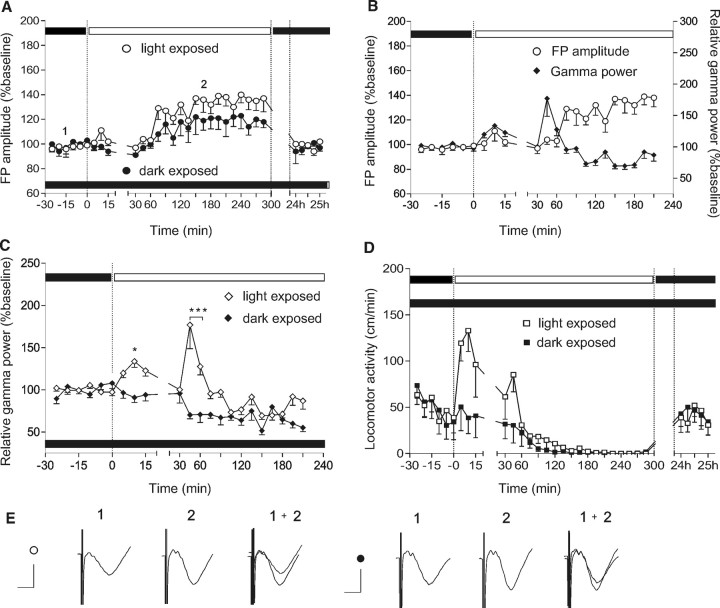Figure 1.
The experience-dependent increase of cortical synaptic transmission is mediated by cortical gamma activity in association with intrinsic circadian rhythms. A, Basal synaptic transmission was compared between a group of animals which experienced a normal light–dark cycle and a group of animals kept under prolonged low-illuminance conditions. At time point 0, the animals in a normal light–dark cycle were exposed to high-illuminance (white dots), whereas the animals that had undergone prolonged dark exposure (black dots) remained under low-illuminance until the end of the 4 h recording period. Later, during the inactive state, the light-exposed group showed a significantly greater increase in the cortical FP compared with the group that had undergone prolonged dark exposure. B, The same light-exposed group of rats shows an enhancement of gamma frequency oscillations during visual exploration under high-illuminance conditions. C, Absolute gamma power in the same groups of animals. In contrast to the light-exposed animals, the group of animals kept in prolonged dark exposure revealed no significant gamma elevation. D, In parallel, locomotor activity in a group of light-exposed animals indicates increased exploration and arousal levels, compared with a group of animals with prolonged dark exposure. E, Analogs represent FPs evoked at the points marked in the figures. Calibration: 5 ms, 1 mV. Left group of analogs represents an example of the FP change in light-exposed animals; the right group shows an example of the FP change in animals that underwent prolonged dark exposure. *p < 0.05; ***p < 0.001. Error bars indicate SEM.

